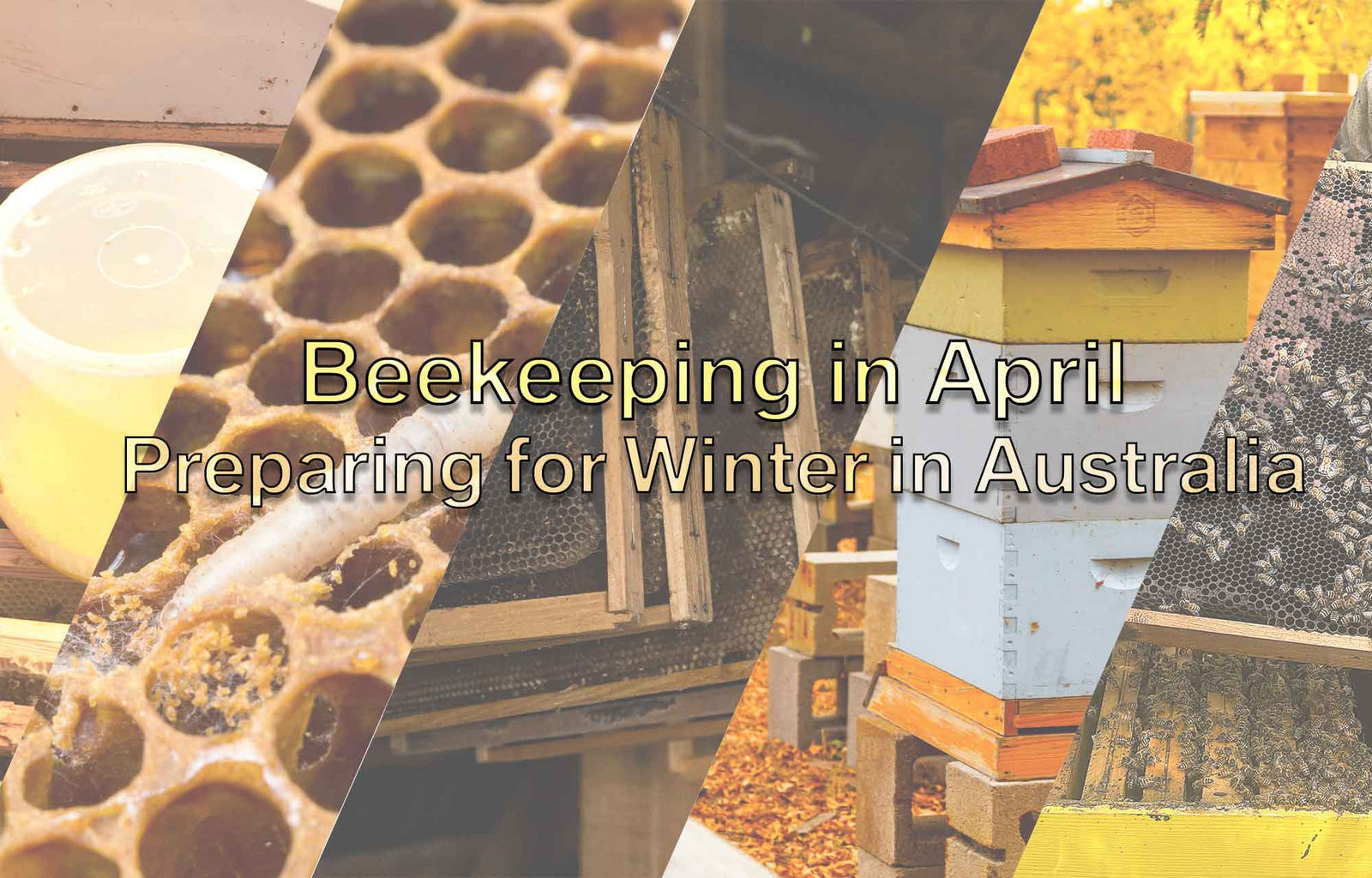As the middle of autumn progresses in Australia, beekeepers must take crucial steps to prepare their colonies for the colder months ahead. April is a key time to conduct final inspections, manage pests, store equipment properly, and weatherproof hives to ensure a strong and healthy colony going into winter. Here’s what you need to focus on:
1. Final Hive Inspections Before Winter
- Ensure colonies have sufficient food stores: Bees rely on stored honey and pollen to survive winter when foraging opportunities are limited. Check that they have ample reserves, particularly in the outer frames of the brood box, where stores are commonly kept.
- Feeding bees with sugar syrup: If food reserves are low, supplement the colony with sugar syrup using a top feeder or frame feeder. Avoid entrance feeders, as they can attract robbing from other bees.
- Emergency feeding with bee fondant: If food resources are critically low and temperatures drop, sugar syrup may not be the best option. In such cases, consider providing a bee fondant, which offers an immediate and long-lasting source of nutrition without excess moisture.
- Check brood patterns: A healthy queen should still be laying, albeit at a reduced rate. Inspect for signs of a failing queen, such as spotty brood patterns or excessive drone cells, and replace her if necessary. You need to ensure that you have enough brood and winter bees in your hive leading into winter.
- Identify weak colonies: Small or struggling colonies may not survive winter on their own. If necessary, consider merging weak colonies with stronger ones to boost their chances of survival and conserve resources.
2. Pest and Disease Management
- Varroa mite monitoring and treatment: Conduct a final check for Varroa mites using alcohol washes, sugar shakes, or sticky boards. If mites are detected, apply an appropriate treatment before winter begins.
- Check for other pests: Be on the lookout for small hive beetles and wax moths, which can devastate weak colonies and stored comb.
- Manage hive ventilation: on typically wooden beehives, provide proper airflow helps prevent condensation buildup inside the hive, which can lead to mould and disease. Use ventilation spacers or slightly prop the lid open to encourage airflow while keeping out pests. On Paradise beehives this is not a problem because you do not get cold-spot on the 40mm thick insulated lid.
3. Protecting Stored Equipment and Frames
- Safely store removed supers and frames: As hives are downsized for winter, surplus drawn comb and supers must be stored carefully to prevent wax moth infestations and rodent damage.
- Use Wax Guardian for wax moth prevention: This treatment protects stored frames without needing a freezer. Learn more about Wax Guardian here.
- Maintain proper storage conditions: Keep frames in a cool, dry, and well-ventilated space to prevent mould and structural damage to woodenware.
4. Weatherproofing and Winter Hive Protection
- Secure hive lids: Ensure that lids are firmly in place and can withstand strong winds and rain to prevent moisture from entering the hive. This can be achieved by strapping using an em-lock or placing a heavy item on top of your lid however, ensure that your hive can sustain the extra weight.
- Tilt hives slightly forward: This prevents water from pooling inside the hive particularly the inside of the lid, reducing the risk of damp conditions that could harm the colony. Recommendation is around 5 degrees. Ventilated floors have less problems because the water tends to escape through the ventilated mesh.
- Reduce hive entrances: Installing entrance reducers or mouse guards helps maintain warmth while keeping out pests like rodents that seek shelter in winter.
5. Packing Hives Down for Winter
- Conduct a final colony strength check: Assess the overall health of the hive by observing brood patterns, food stores, and colony size.
- Reduce hive size to match colony strength: Many hives will need to be downsized to a single brood box to prevent unnecessary energy expenditure in heating unused space.
- Remove unnecessary empty frames and boxes: Empty frames or comb that is not being used should be taken out to help bees maintain warmth and conserve energy.
- Monitor for signs of disease: Check for symptoms of brood diseases such as chalkbrood, American foulbrood (AFB) or European foulbrood (EFB) and take necessary action if detected.
- Ensure honey and pollen are well-distributed: Position food stores close to the cluster to ensure easy access during cold weather.
- Minimize hive openings: While some ventilation is necessary, reducing gaps and cracks will help bees retain heat and prevent drafts.
By taking these essential steps in April, you can help your bees transition smoothly into winter and ensure they emerge strong and healthy in spring. Regular monitoring, proper food reserves, and well-maintained hives will set your colony up for success in the colder months.
Happy Beekeeping!

